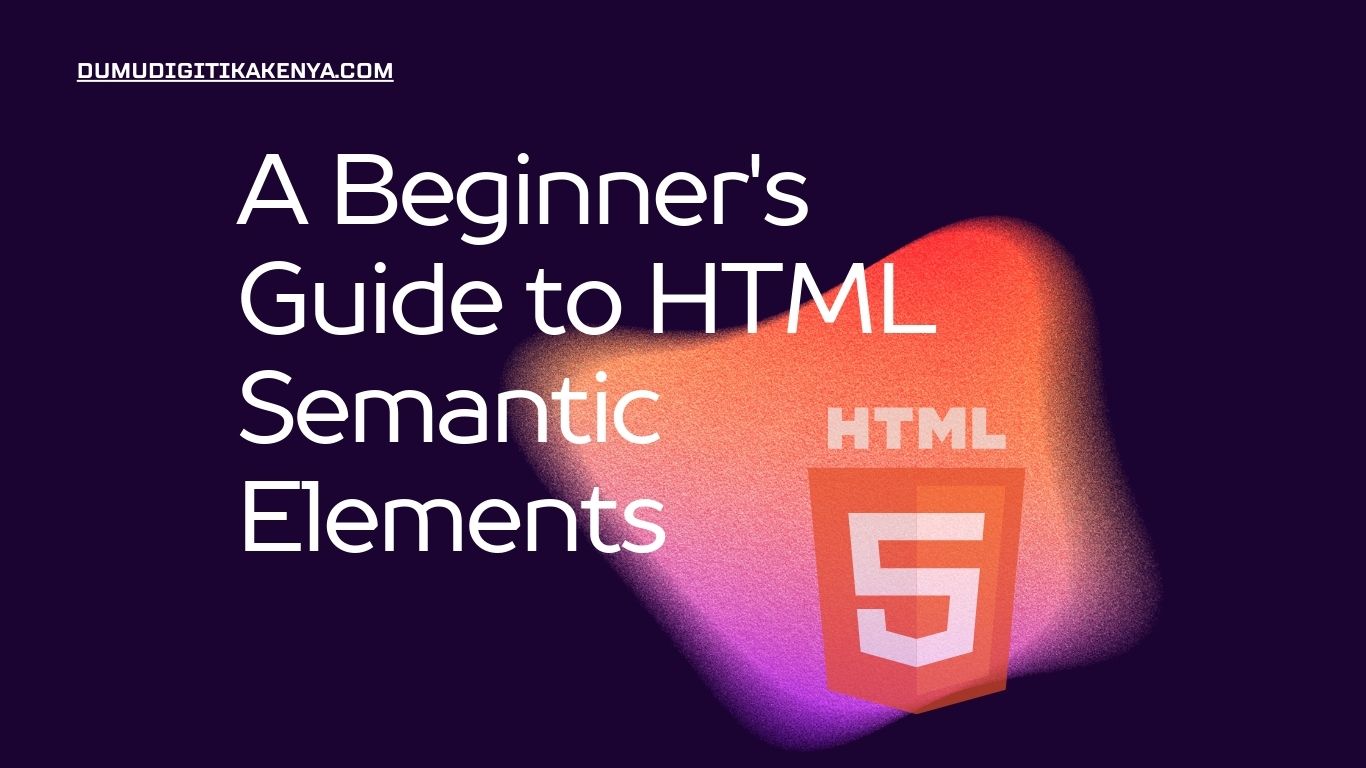Introduction To HTML Semantic Elements
Welcome to our comprehensive tutorial on HTML Semantic Elements! In the dynamic realm of web development, harnessing the power of HTML’s semantic elements is an indispensable skill. In this guide, we will unravel the essence of HTML Semantic Elements, emphasizing their pivotal role in structuring web content for improved accessibility and search engine optimization (SEO). Whether you’re a budding web developer or an enthusiast looking to enhance your knowledge, this tutorial will equip you with the fundamental understanding and practical skills necessary to leverage HTML Semantic Elements effectively.
HTML Semantic Elements are the building blocks that grant context and meaning to your web content. By using these elements correctly, you not only make your website more understandable to both users and search engines but also enhance its overall user experience. Throughout this tutorial, we will explore key semantic elements like <header>, <nav>, <main>, <article>, and <section>, showcasing their utility with clear code examples and explanations. By the end of this tutorial, you’ll have a

Table of Contents
Step 1: Setting Up Your HTML Document
Before we delve into semantic elements, let’s set up our HTML document. Create a new HTML file and add the following code:
<!DOCTYPE html>
<html>
<head>
<title>HTML Semantic Elements Tutorial</title>
</head>
<body>
<!-- Your content will go here -->
</body>
</html>Step 2: The Element
The <header> element represents the introductory content of a web page or a section. It typically includes a website logo, site title, and navigation links. Add the following code within the <body> element:
<header>
<h1>Welcome to My Website</h1>
<nav>
<ul>
<li><a href="#">Home</a></li>
<li><a href="#">About</a></li>
<li><a href="#">Contact</a></li>
</ul>
</nav>
</header>Step 3: The Element
The <nav> element represents a section with navigation links. It’s commonly used within the <header> or <footer> elements. Here, we’ve included a simple navigation menu within the <nav> element.
Step 4: The Element
The <main> element represents the main content of a web page. It should be unique to the document and exclude content like headers, footers, and sidebars. Add a <main> element with some content:
<main>
<h2>About Us</h2>
<p>Welcome to our website! We are dedicated to providing you with valuable information.</p>
</main>Step 5: The Element
The <article> element defines a self-contained piece of content that can be distributed independently. It’s often used for blog posts, news articles, or forum posts. Create an example article:
<article>
<h3>How to Learn HTML</h3>
<p>Learning HTML is the first step in becoming a web developer...</p>
</article>Step 6: The Element
The <section> element represents a generic section of a web page, such as chapters, tabs, or parts of a document. It’s a container for related content. Let’s add a section:
<section>
<h2>Our Services</h2>
<p>We offer a range of services, including web design, development, and SEO optimization.</p>
</section>Conclusion
In conclusion, mastering HTML Semantic Elements is a pivotal step towards creating well-structured and search engine-friendly web content. By imbuing your HTML documents with semantic meaning, you not only enhance the accessibility of your website but also improve its SEO ranking. The elements like <header>, <nav>, <main>, <article>, and <section> offer a powerful toolbox for web developers to organize and present information in a logical and meaningful way.
As you continue your journey in web development, remember that HTML Semantic Elements are not just about complying with web standards; they are your allies in providing a seamless and enriched user experience. When used thoughtfully and appropriately, these elements can contribute significantly to your website’s success. So, keep practicing and exploring the world of HTML Semantic Elements to unlock the full potential of your web development skills. By doing so, you’ll be well on your way to creating websites that are both user-friendly and search engine-optimized, ultimately setting you apart in the digital landscape. Thank you for joining us in this tutorial, and we wish you success in your web development endeavors with HTML Semantic Elements.




